- Home
- Jules Verne
Voyage au centre de la terre. English Page 41
Voyage au centre de la terre. English Read online
Page 41
CHAPTER XXXVIII.
THE PROFESSOR IN HIS CHAIR AGAIN
To understand this apostrophe of my uncle's, made to absent Frenchsavants, it will be necessary to allude to an event of highimportance in a palaeontological point of view, which had occurred alittle while before our departure.
On the 28th of March, 1863, some excavators working under thedirection of M. Boucher de Perthes, in the stone quarries of MoulinQuignon, near Abbeville, in the department of Somme, found a humanjawbone fourteen feet beneath the surface. It was the first fossil ofthis nature that had ever been brought to light. Not far distant werefound stone hatchets and flint arrow-heads stained and encased bylapse of time with a uniform coat of rust.
The noise of this discovery was very great, not in France alone, but inEngland and in Germany. Several savants of the French Institute, andamongst them MM. Milne-Edwards and de Quatrefages, saw at once theimportance of this discovery, proved to demonstration the genuineness ofthe bone in question, and became the most ardent defendants in what theEnglish called this 'trial of a jawbone.' To the geologists of theUnited Kingdom, who believed in the certainty of the fact--Messrs.Falconer, Busk, Carpenter, and others--scientific Germans were soonjoined, and amongst them the forwardest, the most fiery, and the mostenthusiastic, was my uncle Liedenbrock.
Therefore the genuineness of a fossil human relic of the quaternaryperiod seemed to be incontestably proved and admitted.
It is true that this theory met with a most obstinate opponent in M.Elie de Beaumont. This high authority maintained that the soil ofMoulin Quignon was not diluvial at all, but was of much more recentformation; and, agreeing in that with Cuvier, he refused to admitthat the human species could be contemporary with the animals of thequaternary period. My uncle Liedenbrock, along with the great body ofthe geologists, had maintained his ground, disputed, and argued,until M. Elie de Beaumont stood almost alone in his opinion.
We knew all these details, but we were not aware that since ourdeparture the question had advanced to farther stages. Other similarmaxillaries, though belonging to individuals of various types anddifferent nations, were found in the loose grey soil of certaingrottoes in France, Switzerland, and Belgium, as well as weapons,tools, earthen utensils, bones of children and adults. The existencetherefore of man in the quaternary period seemed to become daily morecertain.
Nor was this all. Fresh discoveries of remains in the pleioceneformation had emboldened other geologists to refer back the humanspecies to a higher antiquity still. It is true that these remainswere not human bones, but objects bearing the traces of hishandiwork, such as fossil leg-bones of animals, sculptured and carvedevidently by the hand of man.
Thus, at one bound, the record of the existence of man receded farback into the history of the ages past; he was a predecessor of themastodon; he was a contemporary of the southern elephant; he lived ahundred thousand years ago, when, according to geologists, thepleiocene formation was in progress.
Such then was the state of palaeontological science, and what we knewof it was sufficient to explain our behaviour in the presence of thisstupendous Golgotha. Any one may now understand the frenziedexcitement of my uncle, when, twenty yards farther on, he foundhimself face to face with a primitive man!
It was a perfectly recognisable human body. Had some particular soil,like that of the cemetery St. Michel, at Bordeaux, preserved it thusfor so many ages? It might be so. But this dried corpse, with itsparchment-like skin drawn tightly over the bony frame, the limbsstill preserving their shape, sound teeth, abundant hair, and fingerand toe nails of frightful length, this desiccated mummy startled usby appearing just as it had lived countless ages ago. I stood mutebefore this apparition of remote antiquity. My uncle, usually sogarrulous, was struck dumb likewise. We raised the body. We stood itup against a rock. It seemed to stare at us out of its empty orbits.We sounded with our knuckles his hollow frame.
After some moments' silence the Professor was himself again. OttoLiedenbrock, yielding to his nature, forgot all the circumstances ofour eventful journey, forgot where we were standing, forgot thevaulted cavern which contained us. No doubt he was in mind back againin his Johannaeum, holding forth to his pupils, for he assumed hislearned air; and addressing himself to an imaginary audience, heproceeded thus:
"Gentlemen, I have the honour to introduce to you a man of thequaternary or post-tertiary system. Eminent geologists have deniedhis existence, others no less eminent have affirmed it. The St.Thomases of palaeontology, if they were here, might now touch him withtheir fingers, and would be obliged to acknowledge their error. I amquite aware that science has to be on its guard with discoveries ofthis kind. I know what capital enterprising individuals like Barnumhave made out of fossil men. I have heard the tale of the kneepan ofAjax, the pretended body of Orestes claimed to have been found by theSpartans, and of the body of Asterius, ten cubits long, of whichPausanias speaks. I have read the reports of the skeleton of Trapani,found in the fourteenth century, and which was at the time identifiedas that of Polyphemus; and the history of the giant unearthed in thesixteenth century near Palermo. You know as well as I do, gentlemen,the analysis made at Lucerne in 1577 of those huge bones which thecelebrated Dr. Felix Plater affirmed to be those of a giant nineteenfeet high. I have gone through the treatises of Cassanion, and allthose memoirs, pamphlets, answers, and rejoinders publishedrespecting the skeleton of Teutobochus, the invader of Gaul, dug outof a sandpit in the Dauphine, in 1613. In the eighteenth century Iwould have stood up for Scheuchzer's pre-adamite man against PeterCampet. I have perused a writing, entitled Gigan--"
Here my uncle's unfortunate infirmity met him--that of being unablein public to pronounce hard words.
"The pamphlet entitled Gigan--"
He could get no further.
"Giganteo--"
It was not to be done. The unlucky word would not come out. At theJohannaeum there would have been a laugh.
"Gigantosteologie," at last the Professor burst out, between twowords which I shall not record here.
Then rushing on with renewed vigour, and with great animation:
"Yes, gentlemen, I know all these things, and more. I know thatCuvier and Blumenbach have recognised in these bones nothing moreremarkable than the bones of the mammoth and other mammals of thepost-tertiary period. But in the presence of this specimen to doubtwould be to insult science. There stands the body! You may see it,touch it. It is not a mere skeleton; it is an entire body, preservedfor a purely anthropological end and purpose."
I was good enough not to contradict this startling assertion.
"If I could only wash it in a solution of sulphuric acid," pursued myuncle, "I should be able to clear it from all the earthy particlesand the shells which are incrusted about it. But I do not possessthat valuable solvent. Yet, such as it is, the body shall tell us itsown wonderful story."
Here the Professor laid hold of the fossil skeleton, and handled itwith the skill of a dexterous showman.
"You see," he said, "that it is not six feet long, and that we arestill separated by a long interval from the pretended race of giants.As for the family to which it belongs, it is evidently Caucasian. Itis the white race, our own. The skull of this fossil is a regularoval, or rather ovoid. It exhibits no prominent cheekbones, noprojecting jaws. It presents no appearance of that prognathism whichdiminishes the facial angle. [1] Measure that angle. It is nearlyninety degrees. But I will go further in my deductions, and I willaffirm that this specimen of the human family is of the Japheticrace, which has since spread from the Indies to the Atlantic. Don'tsmile, gentlemen."
Nobody was smiling; but the learned Professor was frequentlydisturbed by the broad smiles provoked by his learned eccentricities.
"Yes," he pursued with animation, "this is a fossil man, thecontemporary of the mastodons whose remains fill this amphitheatre.But if you ask me how he came there, how those strata on which he layslipped down into this enormous hollow in the globe, I confess Icannot answer that question. N
o doubt in the post-tertiary periodconsiderable commotions were still disturbing the crust of the earth.The long-continued cooling of the globe produced chasms, fissures,clefts, and faults, into which, very probably, portions of the upperearth may have fallen. I make no rash assertions; but there is theman surrounded by his own works, by hatchets, by flint arrow-heads,which are the characteristics of the stone age. And unless he camehere, like myself, as a tourist on a visit and as a pioneer ofscience, I can entertain no doubt of the authenticity of his remoteorigin."
[1] The facial angle is formed by two lines, one touching the browand the front teeth, the other from the orifice of the ear to thelower line of the nostrils. The greater this angle, the higherintelligence denoted by the formation of the skull. Prognathism isthat projection of the jaw-bones which sharpens or lessons thisangle, and which is illustrated in the negro countenance and in thelowest savages.
The Professor ceased to speak, and the audience broke out into loudand unanimous applause. For of course my uncle was right, and wisermen than his nephew would have had some trouble to refute hisstatements.
Another remarkable thing. This fossil body was not the only one inthis immense catacomb. We came upon other bodies at every stepamongst this mortal dust, and my uncle might select the most curiousof these specimens to demolish the incredulity of sceptics.
In fact it was a wonderful spectacle, that of these generations ofmen and animals commingled in a common cemetery. Then one veryserious question arose presently which we scarcely dared to suggest.Had all those creatures slided through a great fissure in the crustof the earth, down to the shores of the Liedenbrock sea, when theywere dead and turning to dust, or had they lived and grown and diedhere in this subterranean world under a false sky, just likeinhabitants of the upper earth? Until the present time we had seenalive only marine monsters and fishes. Might not some living man,some native of the abyss, be yet a wanderer below on this desertstrand?

 Michael Strogoff; Or the Courier of the Czar: A Literary Classic
Michael Strogoff; Or the Courier of the Czar: A Literary Classic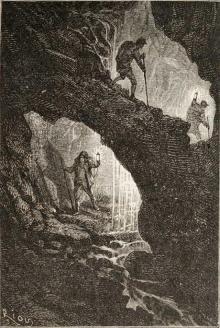 Voyage au centre de la terre. English
Voyage au centre de la terre. English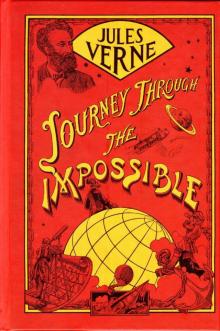 Journey Through the Impossible
Journey Through the Impossible The Castaways of the Flag
The Castaways of the Flag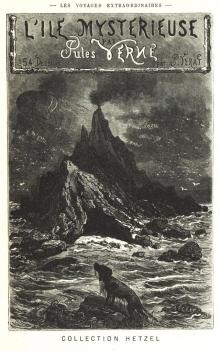 L'île mystérieuse. English
L'île mystérieuse. English Maître du monde. English
Maître du monde. English Around the World in Eighty Days
Around the World in Eighty Days A Voyage in a Balloon
A Voyage in a Balloon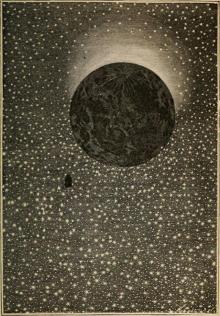 From the Earth to the Moon, Direct in Ninety-Seven Hours and Twenty Minutes: and a Trip Round It
From the Earth to the Moon, Direct in Ninety-Seven Hours and Twenty Minutes: and a Trip Round It Paris in the Twentieth Century
Paris in the Twentieth Century City in the Sahara - Barsac Mission 02
City in the Sahara - Barsac Mission 02 The English at the North Pole
The English at the North Pole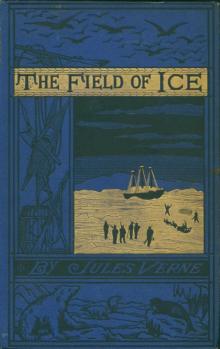 The Field of Ice
The Field of Ice From the Earth to the Moon
From the Earth to the Moon Un capitaine de quinze ans. English
Un capitaine de quinze ans. English The Mysterious Island
The Mysterious Island Les indes-noirs. English
Les indes-noirs. English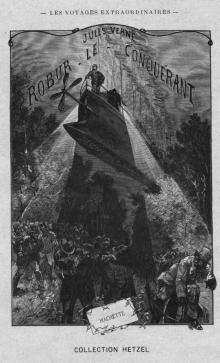 Robur-le-conquerant. English
Robur-le-conquerant. English Propeller Island
Propeller Island Around the World in Eighty Days. Junior Deluxe Edition
Around the World in Eighty Days. Junior Deluxe Edition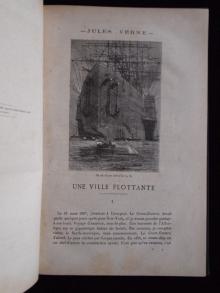 Les forceurs de blocus. English
Les forceurs de blocus. English In the Year 2889
In the Year 2889 Journey to the Centre of the Earth
Journey to the Centre of the Earth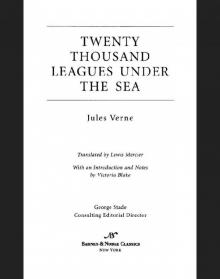 Twenty Thousand Leagues Under the Sea
Twenty Thousand Leagues Under the Sea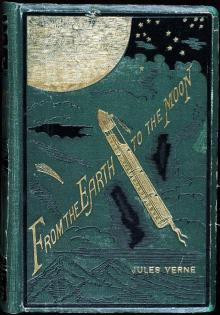 From the Earth to the Moon; and, Round the Moon
From the Earth to the Moon; and, Round the Moon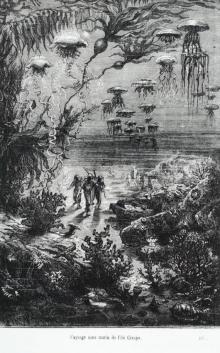 Vingt mille lieues sous les mers. English
Vingt mille lieues sous les mers. English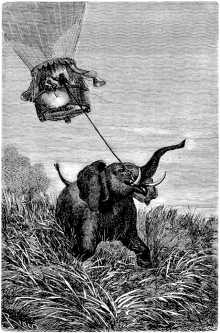 Cinq semaines en ballon. English
Cinq semaines en ballon. English Twenty Thousand Leagues under the Seas
Twenty Thousand Leagues under the Seas Face au drapeau. English
Face au drapeau. English Michael Strogoff; Or, The Courier of the Czar
Michael Strogoff; Or, The Courier of the Czar Un billet de loterie. English
Un billet de loterie. English The Secret of the Island
The Secret of the Island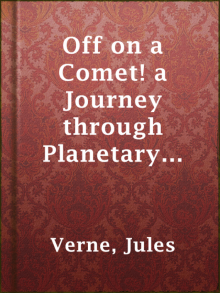 Off on a Comet! a Journey through Planetary Space
Off on a Comet! a Journey through Planetary Space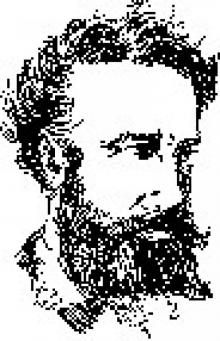 Into the Niger Bend: Barsac Mission, Part 1
Into the Niger Bend: Barsac Mission, Part 1 All Around the Moon
All Around the Moon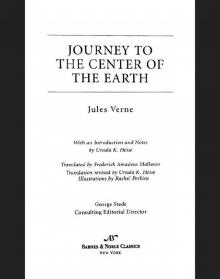 A Journey to the Center of the Earth - Jules Verne: Annotated
A Journey to the Center of the Earth - Jules Verne: Annotated 20000 Lieues sous les mers Part 2
20000 Lieues sous les mers Part 2 Robur-le-Conquerant
Robur-le-Conquerant Les Index Noires
Les Index Noires Michael Strogoff; or the Courier of the Czar
Michael Strogoff; or the Courier of the Czar 20000 Lieues sous les mers Part 1
20000 Lieues sous les mers Part 1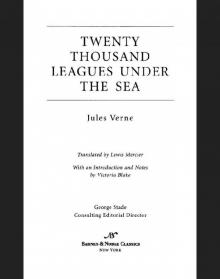 Twenty Thousand Leagues Under the Sea (Barnes & Noble Classics Series)
Twenty Thousand Leagues Under the Sea (Barnes & Noble Classics Series) Five Weeks In A Balloon
Five Weeks In A Balloon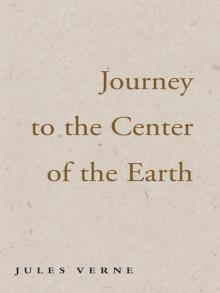 Journey to the Center of the Earth
Journey to the Center of the Earth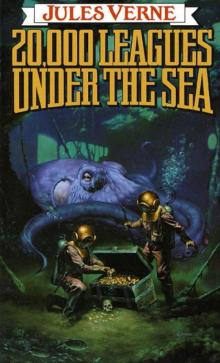 20,000 Leagues Under the Sea
20,000 Leagues Under the Sea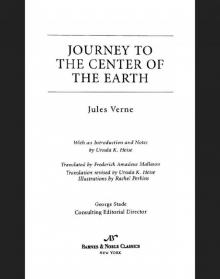 Journey to the Center of the Earth (Barnes & Noble Classics Series)
Journey to the Center of the Earth (Barnes & Noble Classics Series)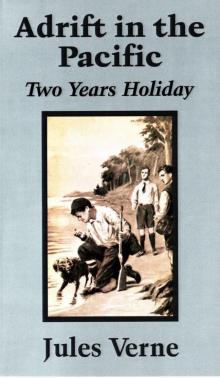 Adrift in the Pacific-Two Years Holiday
Adrift in the Pacific-Two Years Holiday The Collected Works of Jules Verne: 36 Novels and Short Stories (Unexpurgated Edition) (Halcyon Classics)
The Collected Works of Jules Verne: 36 Novels and Short Stories (Unexpurgated Edition) (Halcyon Classics)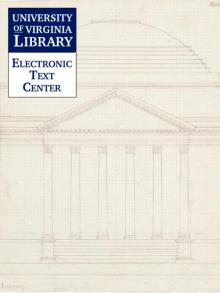 The Survivors of the Chancellor
The Survivors of the Chancellor Their Island Home
Their Island Home Le Chateau des Carpathes
Le Chateau des Carpathes Les Cinq Cents Millions de la Begum
Les Cinq Cents Millions de la Begum The Floating Island
The Floating Island Cinq Semaines En Ballon
Cinq Semaines En Ballon Autour de la Lune
Autour de la Lune